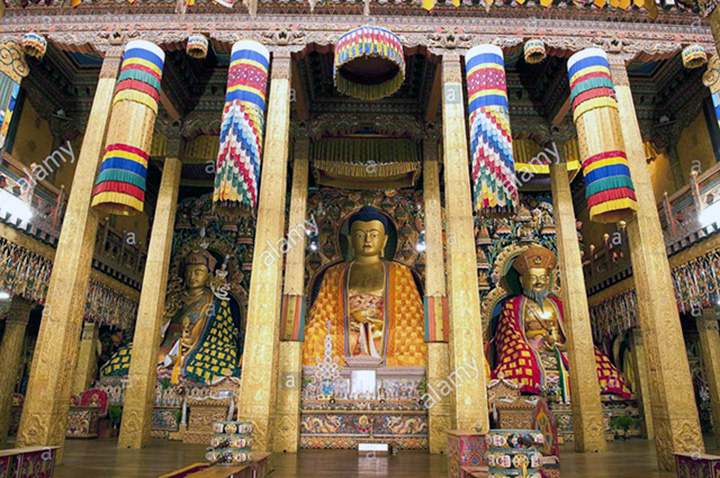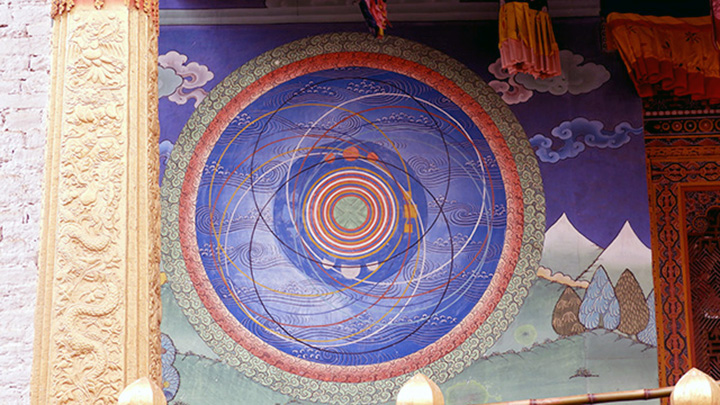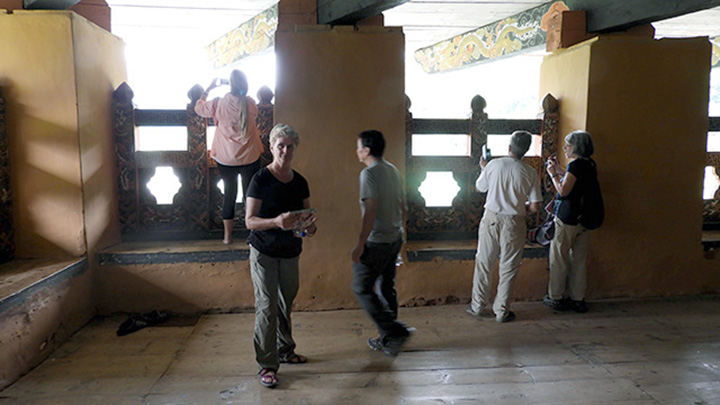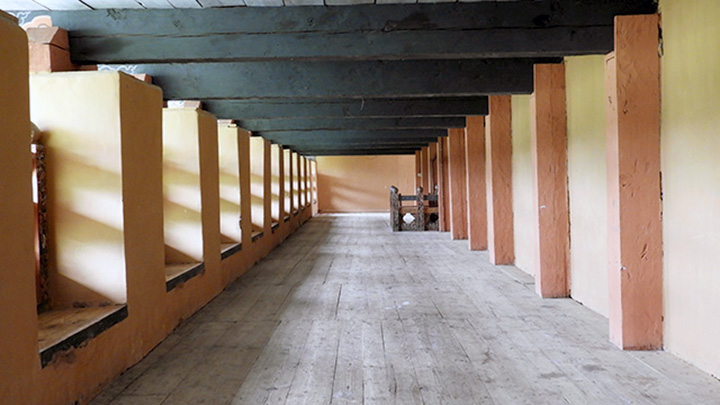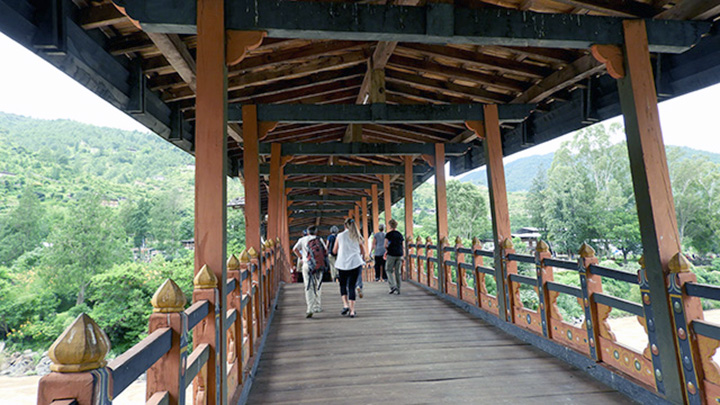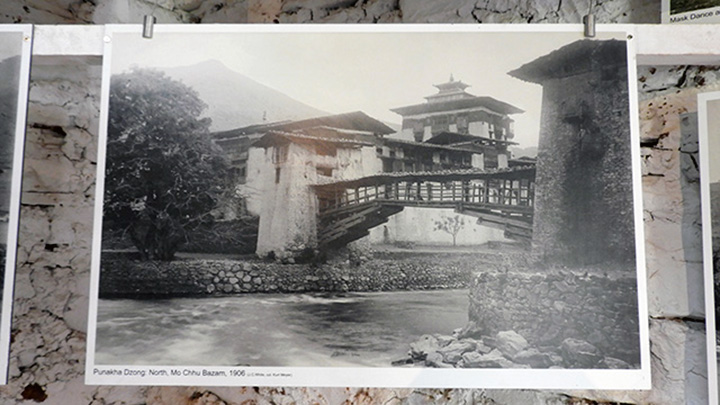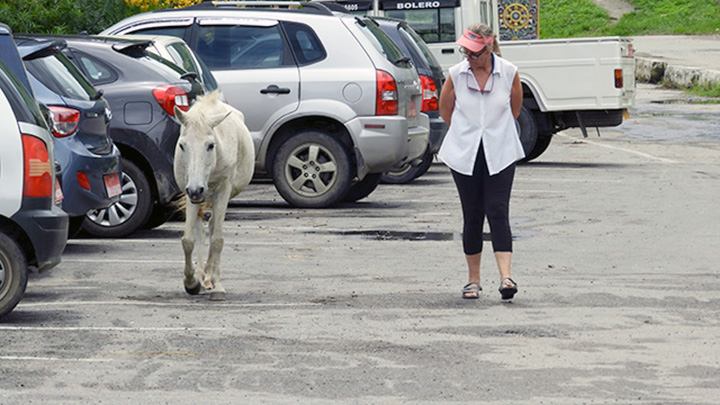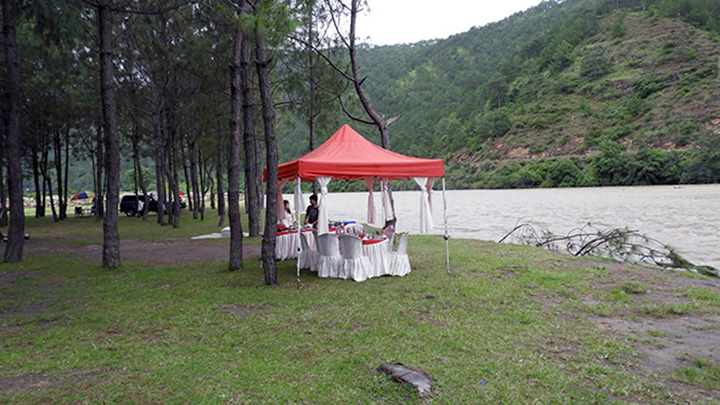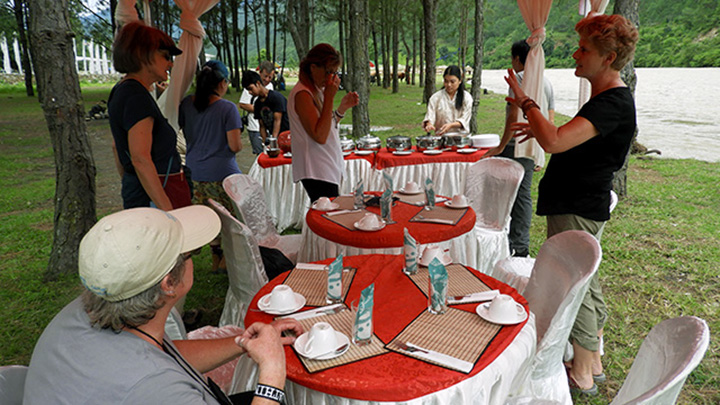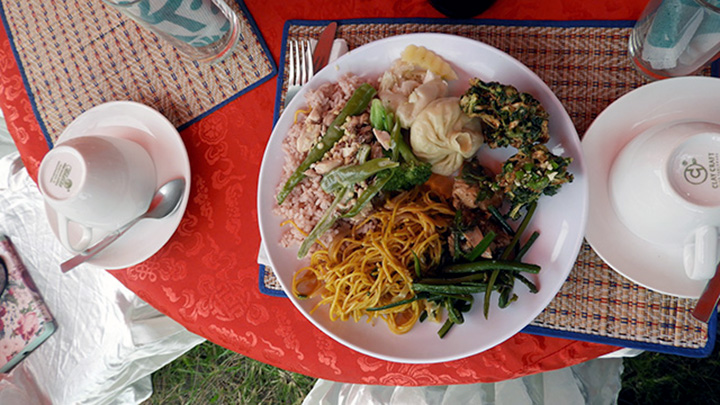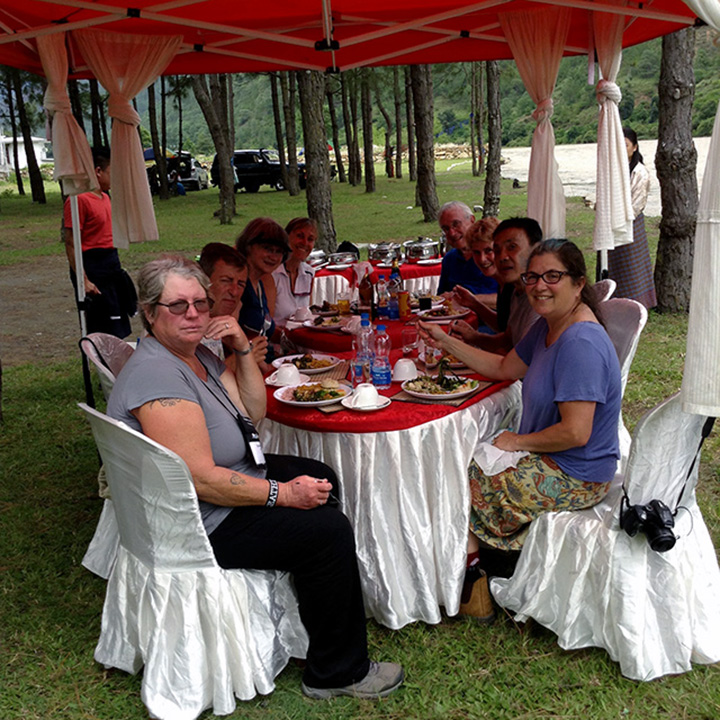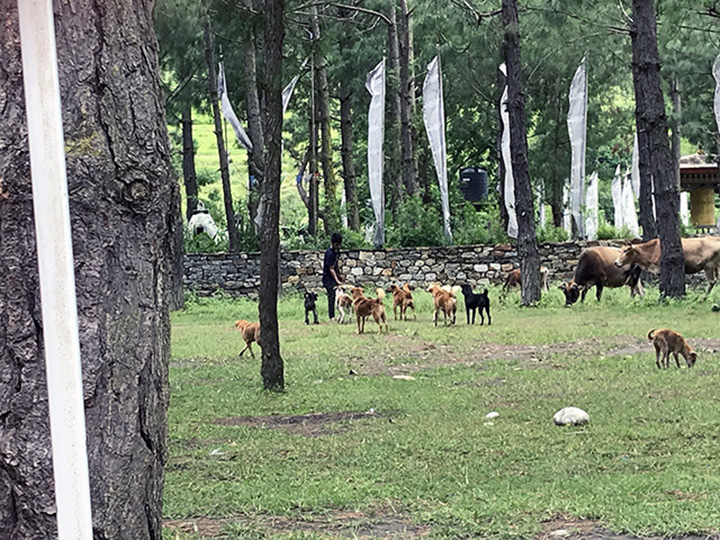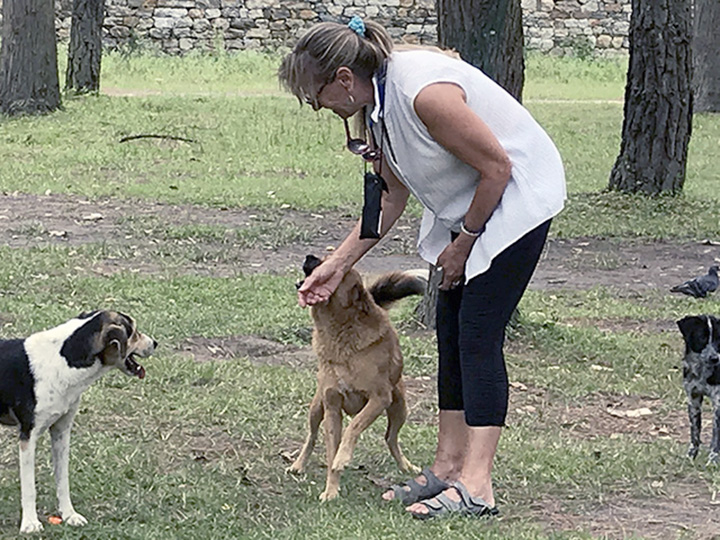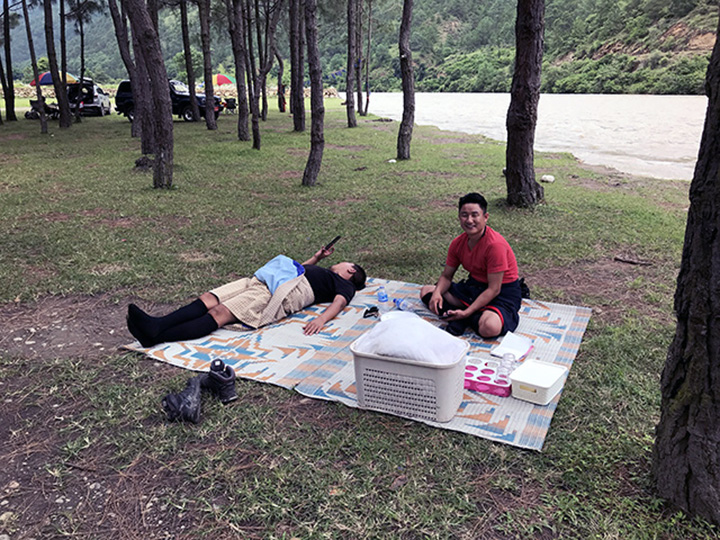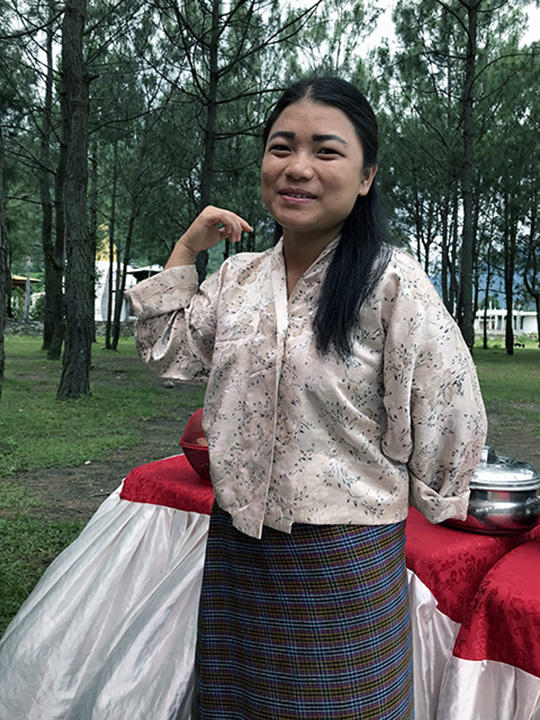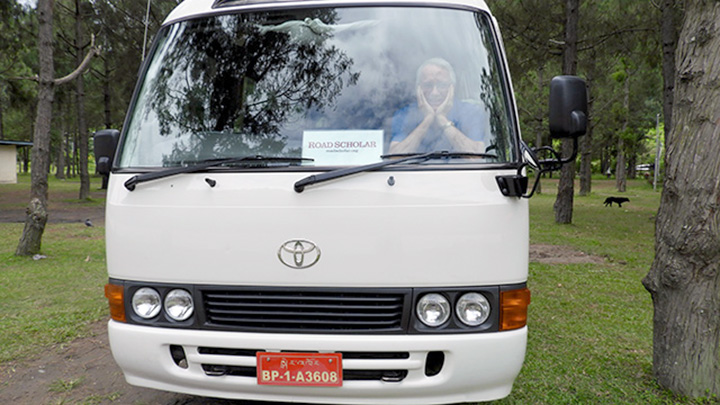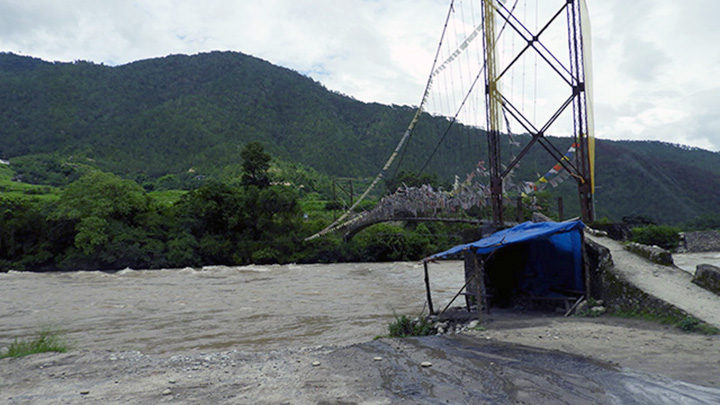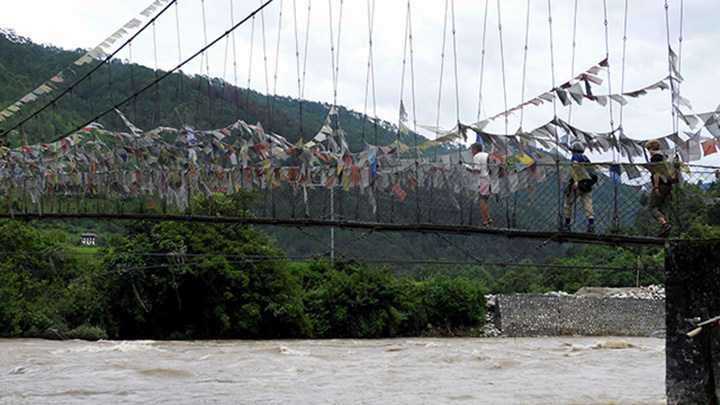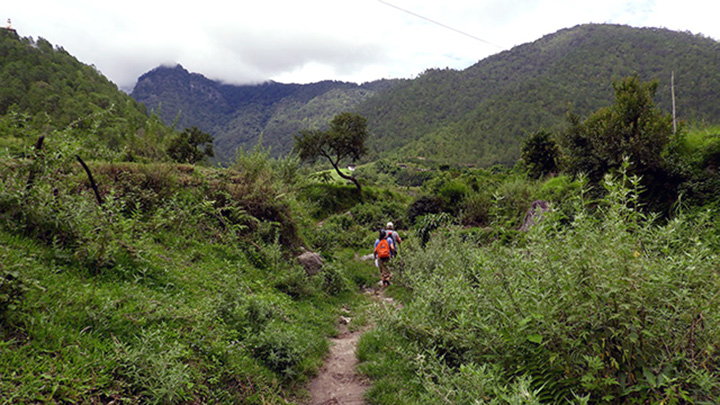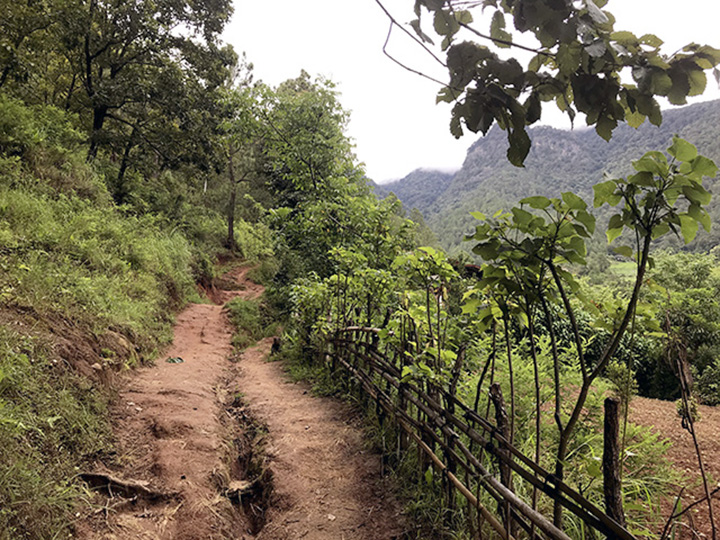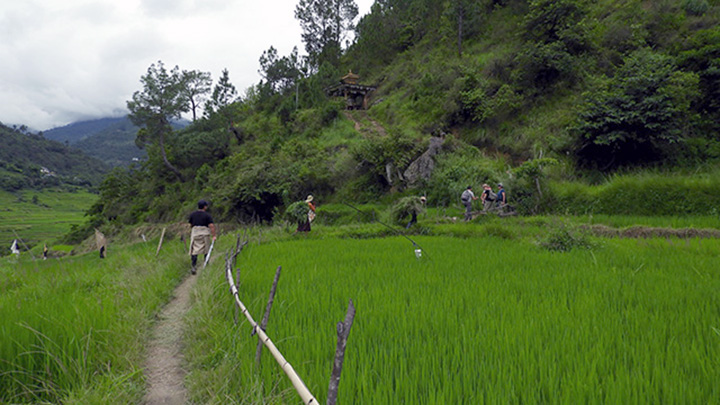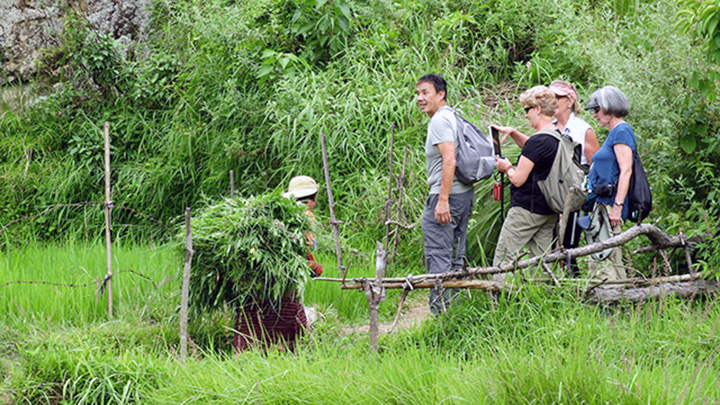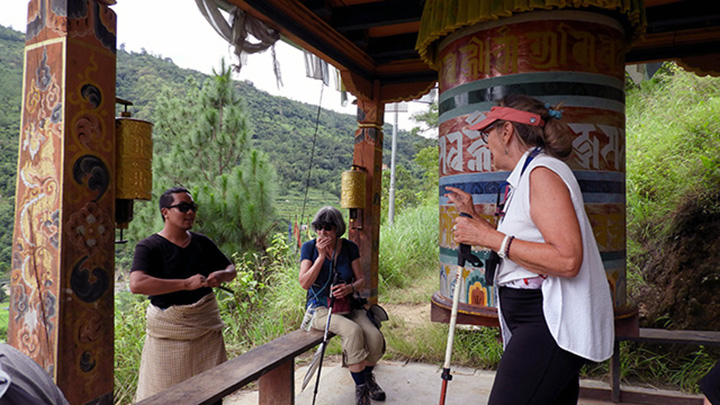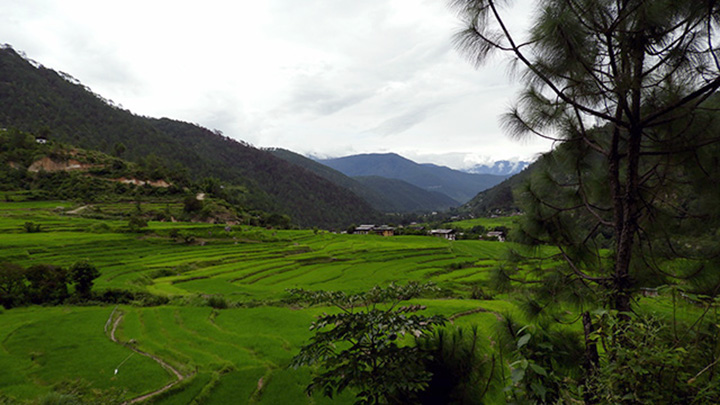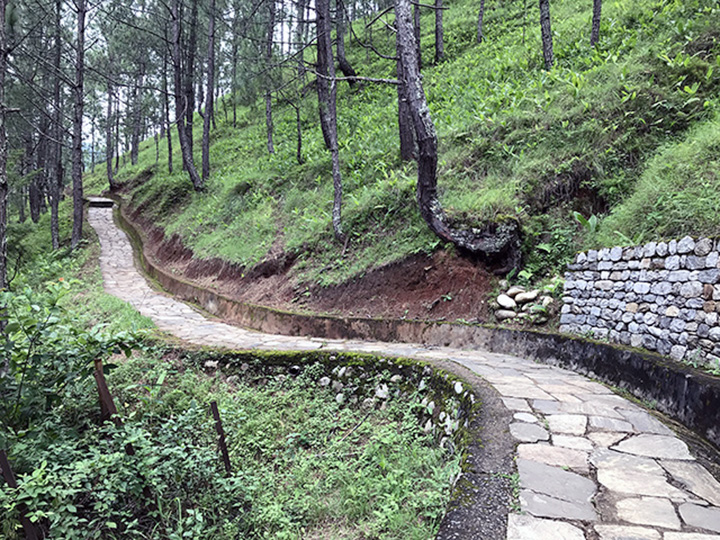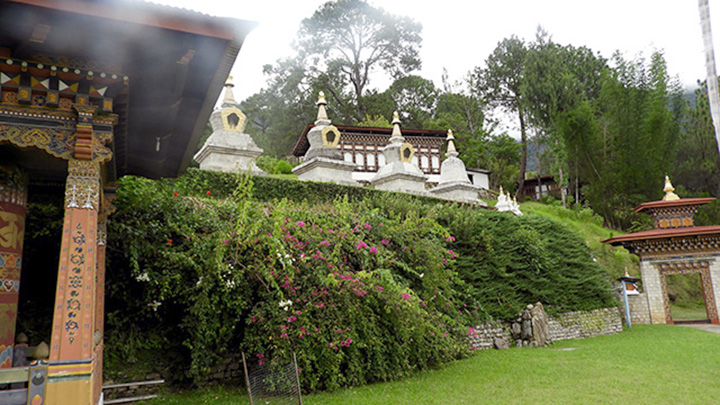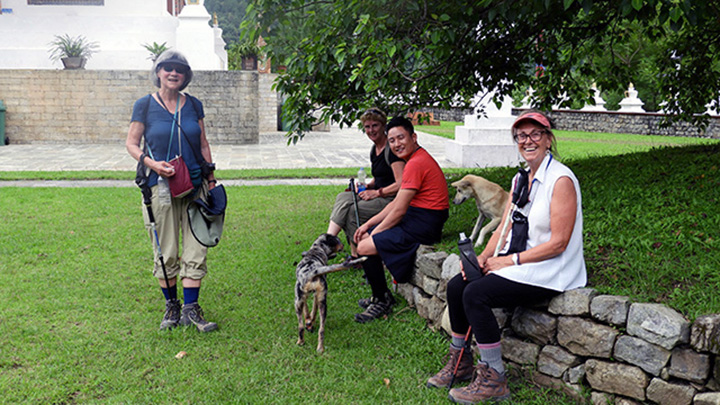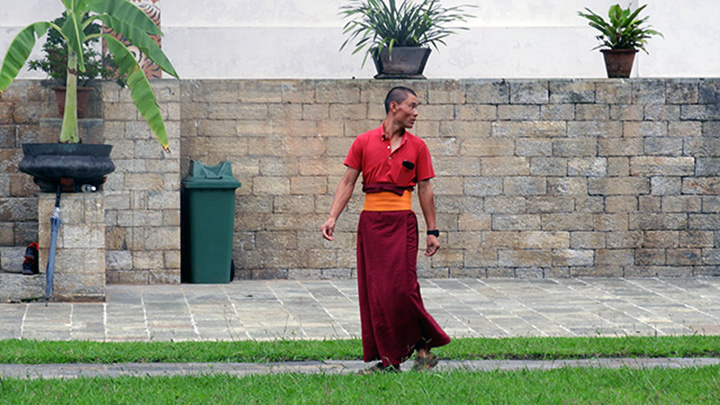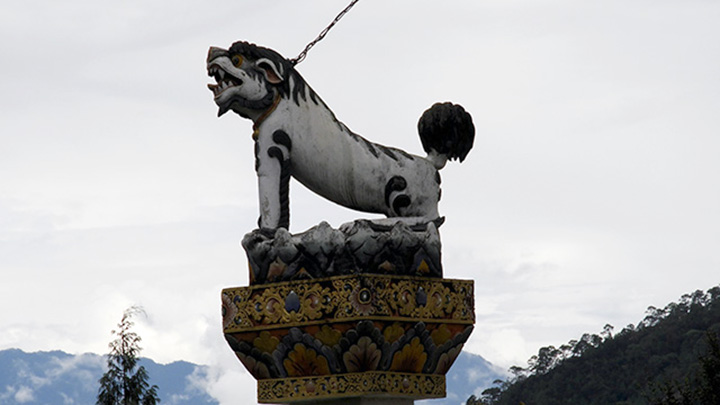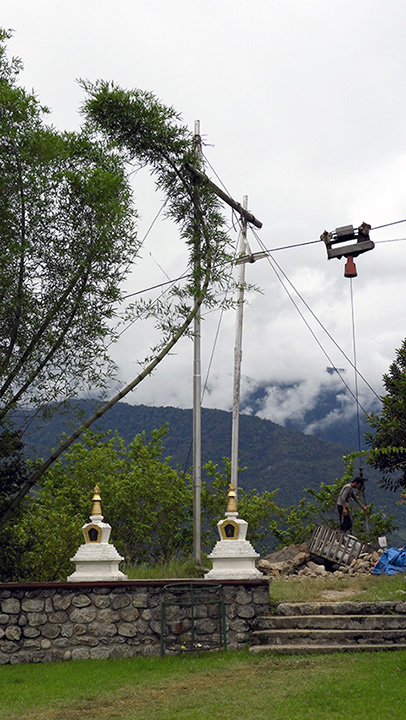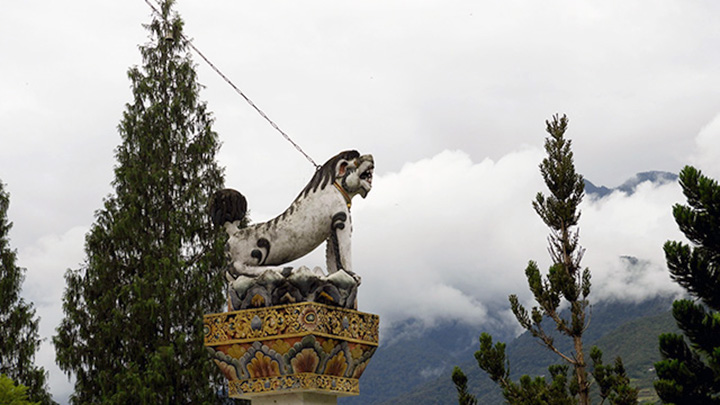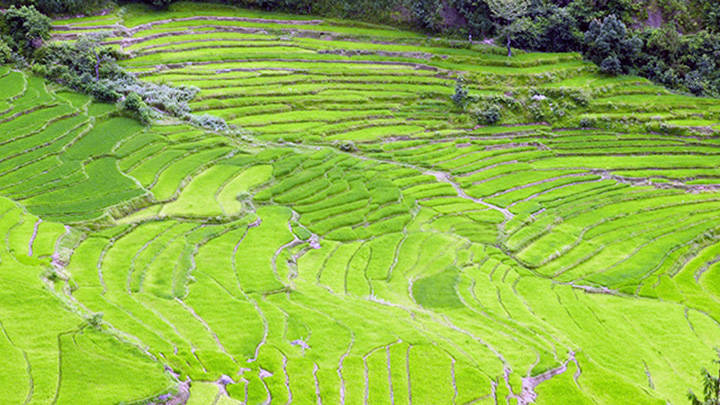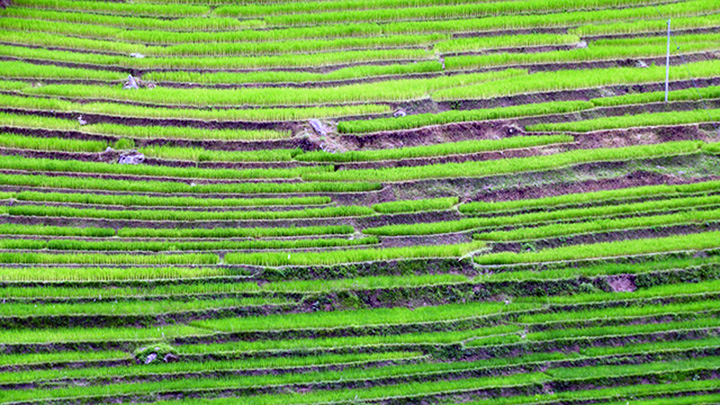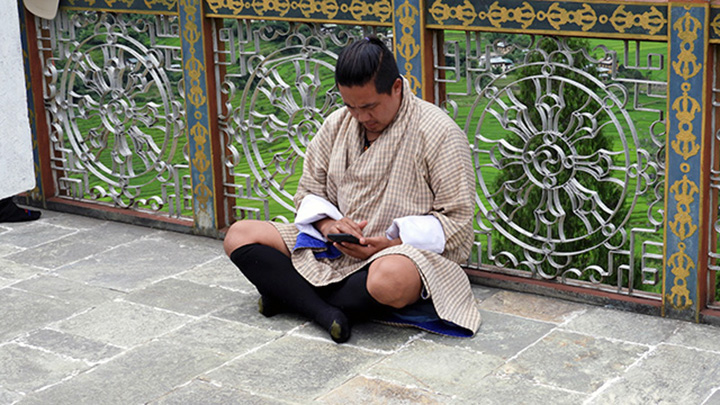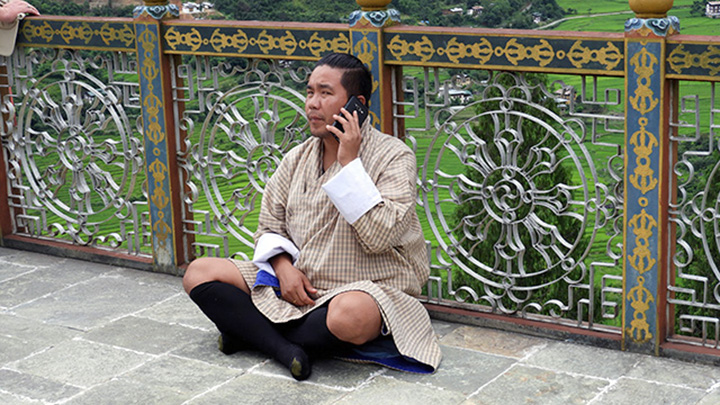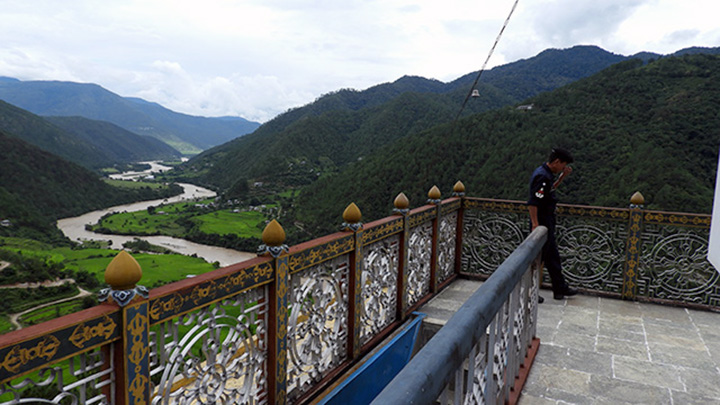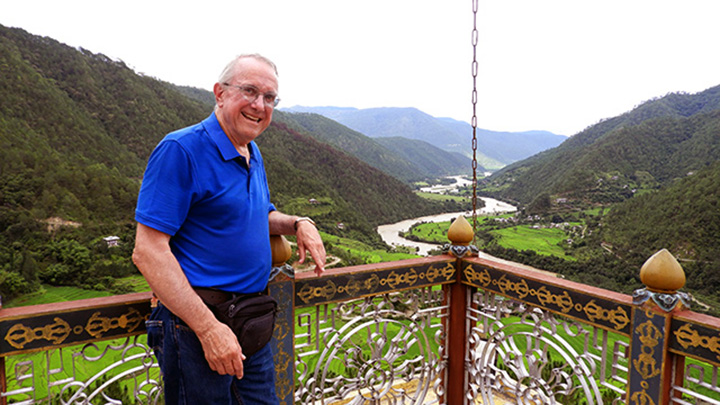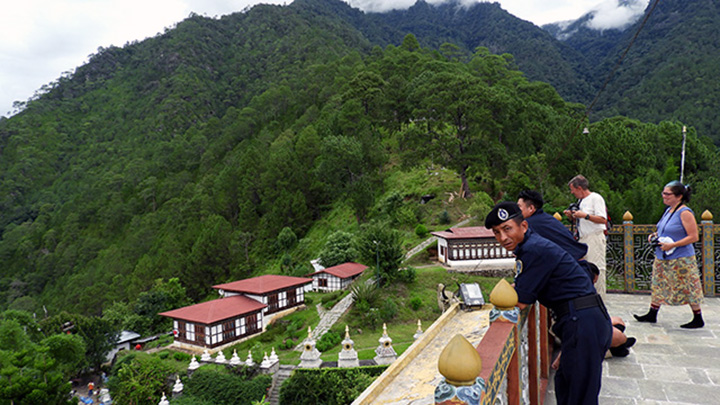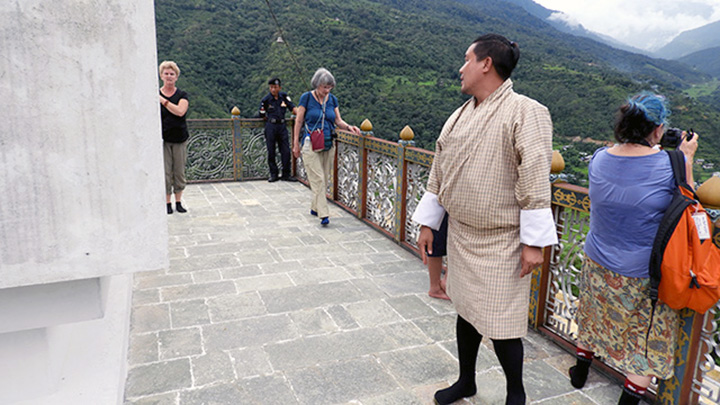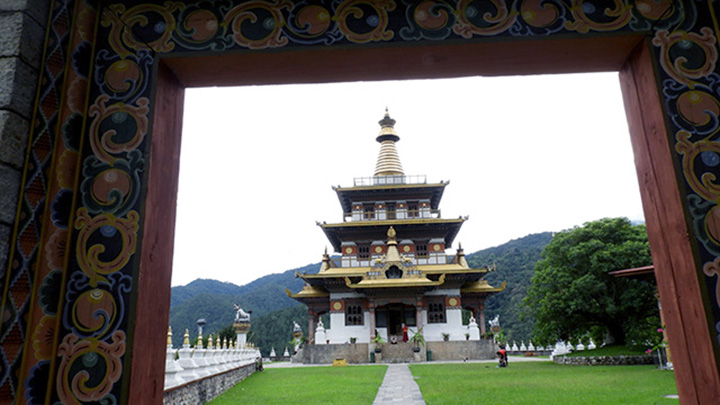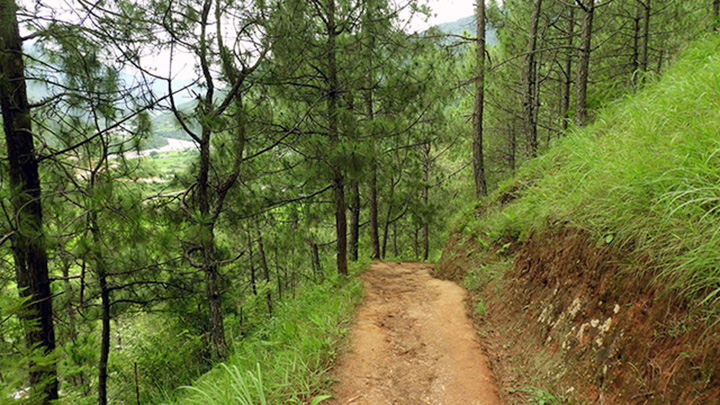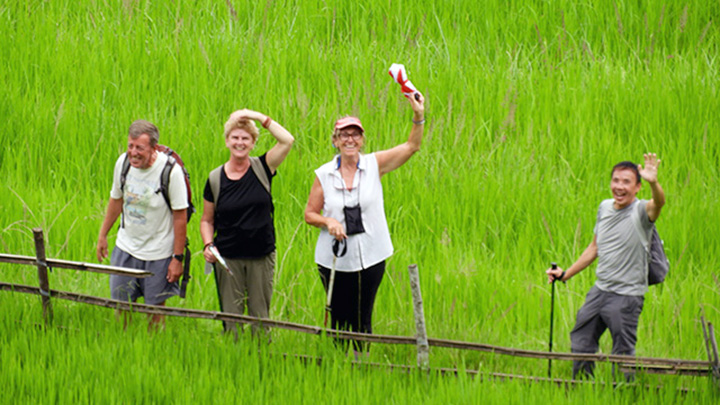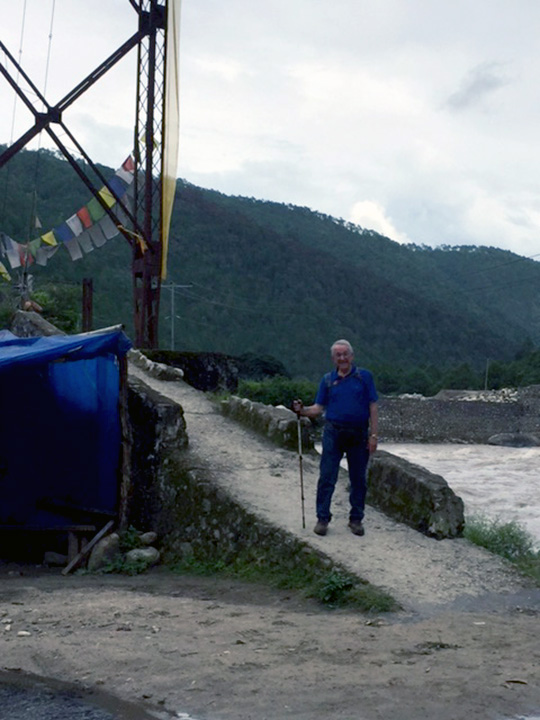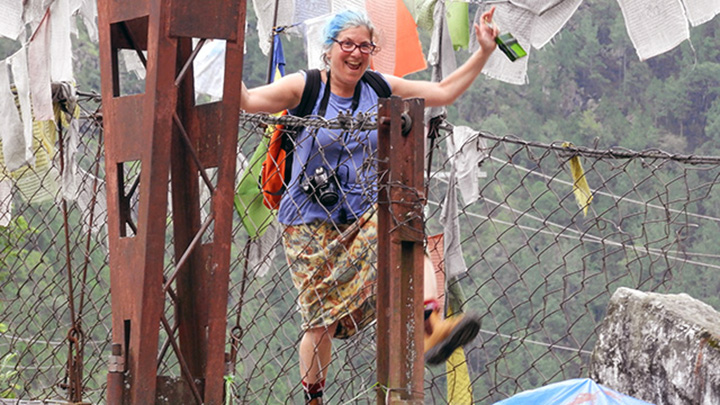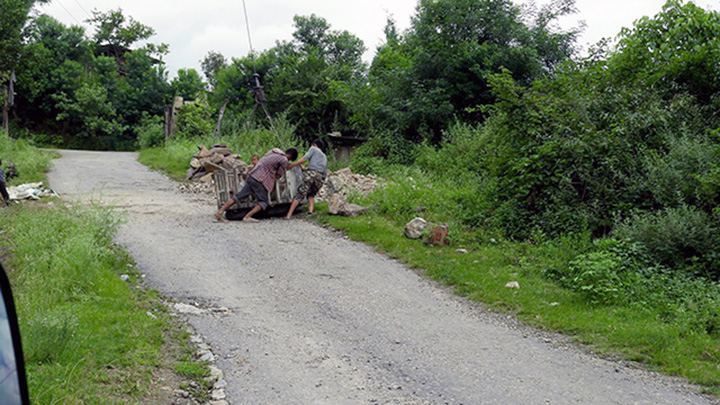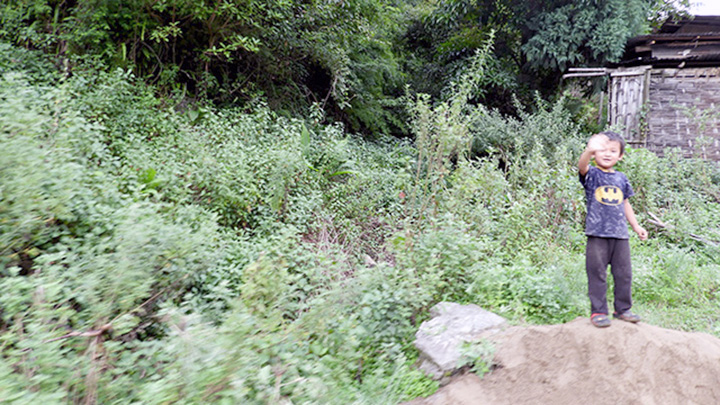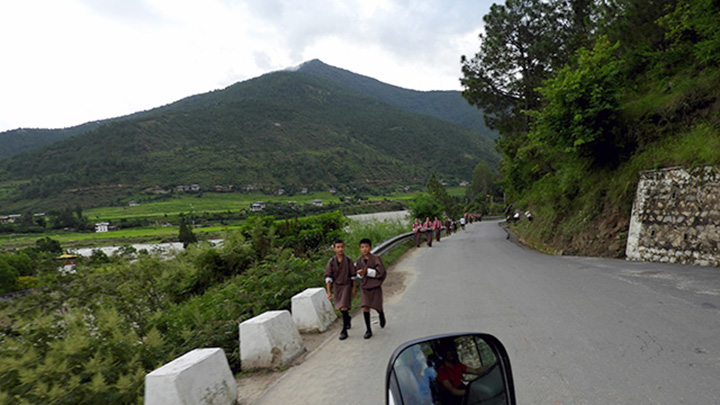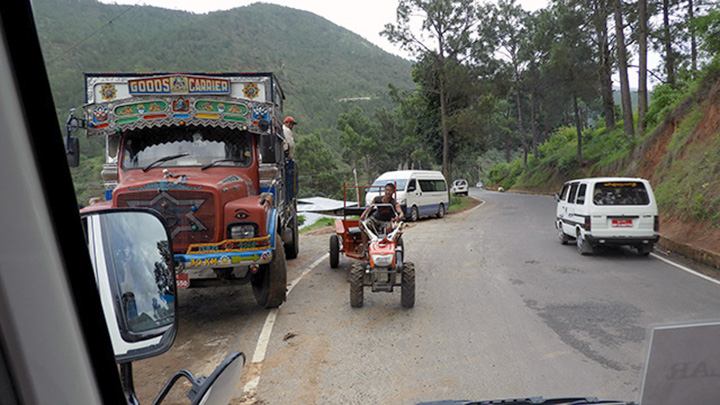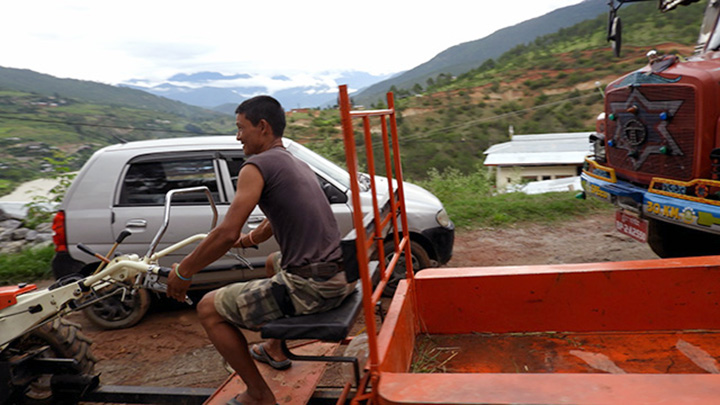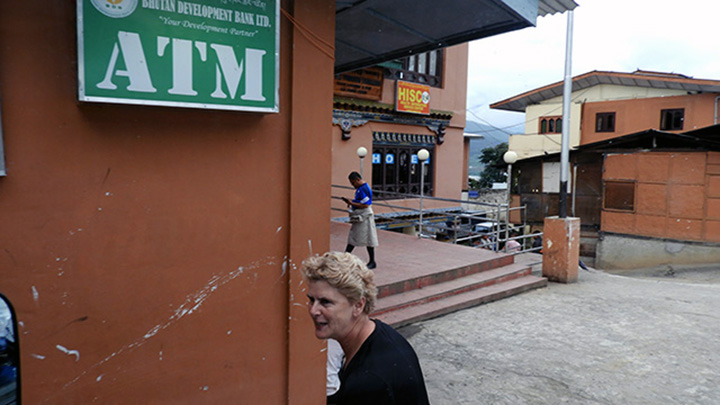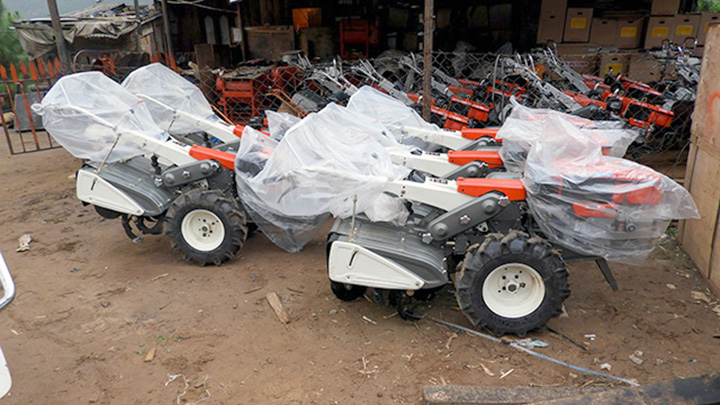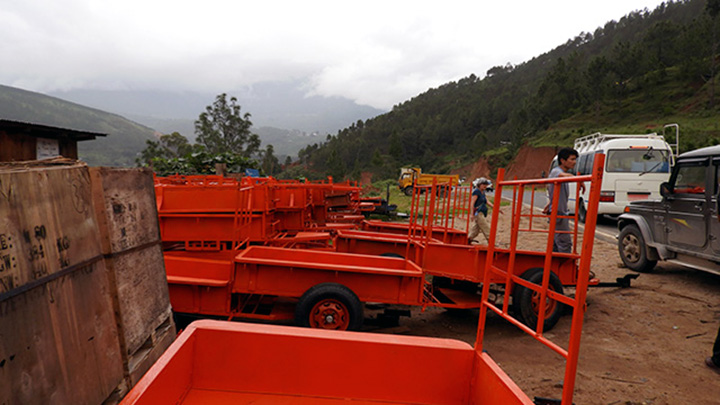|
There's got to be more to Wangdue Phodrang than suggestive arts and crafts. Let's have a look.
Another misty morning at the hotel.
Charlotte and Sharon are ready to go exploring.
Charlotte approves the view.
And why not? The Punatshangchhu Cottages are very nice and they're in a lovely setting.
But there's a steep hill back to the road.
Rocks keep the roof in place over this house we passed on the road.
Tim says hillsides like this, sparsely covered with trees, are the result of fire.
Passing on a curve again.
That one was close.
We've found a nice little park across from a high school.
How clever -- the wind keeps the prayer wheels spinning.
The man river and the woman river
There's a nice view of Punakha Dzong from here. It's at the confluence of two rivers: that's the Mo Chhu (Mother River) on the left and the Pho Chhu (Father River) on the right. The river that is formed is called the Puna Tsang or Sankosh River. Tim has taught us that the Dzongkha word for water, chhu, is also the Dzongkha word for river. How about that?
That's some kind of plant, I'm pretty sure.
And that's a herd of cattle wandering by the high school.
Let's go have a look at Punakha Dzong.
There's a nice cantilevered foot bridge across the Mo Chhu.
The Road Scholars are about to walk across it.
It's right up there.
And through here.
I'd never considered what a man in a gho would look like on a motorcycle, but there he is.
And there's the bridge.
The Mo from the bridge.
Punakha Dzong is also known as Pungtang Dewa chhenbi Phodrang (meaning "the palace of great happiness or bliss."
Jean seems blissful.
Bill's doing OK here too.
You'd think that when you've seen one dzong you've seen them all, but that's not really the case.
There are similarities, of course, but the differences keep things interesting. Of course you can't take pictures inside.
But you can download them from the internet. This is the kind of thing we saw in the dzongs.
It was common to see three big statues in a place of honor in the shrines. That's Buddha in the middle with Guru Rinpoche on the left and the guy with the beard on the right is Shabdrung Ngawang Namgyal, who is commonly known as "the Unifier" because he unified Bhutan into a nation-state. Ngawang Namgal is his given name while Shabdrung is a title given to high lamas in Tibet. Most people simply refer to him simply as Shabdrung. In the 1630s he conquered a group of warring fiefdoms and unified them into a single Bhutan led by an administrative ruler (Druk Desi) and a religious ruler (Je Khempo). So now you know.
Tim is finally telling us the legend behind the "Four Harmonious Friends" we've been seeing all over Bhutan. Keep in mind that in Bhutanese culture seniority is very important: whoever is has been around the longest gets the most respect. Here's how the story goes: An elephant, a monkey, a hare and a bird found themselves at a lovely tree which bore delicious fruit, and each of them was insisting on ownership of the tree. The elephant said, "This tree belongs to me because I've known about it for the longest time. Why the first time I saw this tree it was only as big as I am now, and just look -- it's grown huge!" The monkey said, "So what? The first time I saw this tree it was only a sapling as big as I am now, so surely I owned it before you did." The hare said, "Oh yeah? Well the first time I saw the tree it was just a tiny sprout, smaller than I am now. So certainly that's my tree." And the bird said, "I've got you all beat. When I first came here there was no tree at all until I pooped out a seed and planted it. So stay out of my tree!" And they argued and they argued until finally they got tired and the elephant began reaching up for some luscious fruit. But even with his long trunk he could gather only a little, until the monkey, taking pity, said, "Let me help." And the monkey scampered up into the higher branches and began tossing down fruit to the elephant. But the elephant missed some of the falling fruit and it landed on the ground. That's when the hare felt compassion and said, "Watch this!" And he began scampering around the tree gathering fruit off the ground for the elephant and the monkey. But still there was fruit in the highest reaches of the tree that even the monkey couldn't reach. "I've got this," said the bird, and he flew up to the topmost fruit and pecked on the stems and the fruit fell down to the others, and they all began feasting. That's when the four animals learned the value of cooperation and became harmonious friends and to this day they are still enjoying the delicious fruit of that wonderful tree. Is that a great lesson or what?
This guy perched on the ladder was cleaning the mold and mildew off the stupa while his wife kept him safe.
Another lovely dzong.
Tim is telling the Road Scholars all about it.
This display case holds the remains of an ancient lu (or is it "loo?") that was discovered here during some restoration. Don't pee on the loo or you'll get a rash. Tim is serious about this.
You've heard of the golden door? Well here it is.
More nice decoration.
It's all so elaborate and beautiful and ... very much the same as everywhere else.
That represents the harmony of the spheres or something like that I think maybe. It's pretty anyway.
So's the view.
Punakha Dzong is the second oldest and second largest dzong in Bhutan.
And it was built without nails.
This is actually a new bridge (bazam).
The old bazam, built 1637-38 and pictured here, was destroyed by a flood in 1958.
After years of making do with a temporary bridge, Germany stepped up and replaced everything with the beautiful structure we see today.
Leslie keeps making animal friends.
Those are monks.
Hey, look what Road Scholar has set up for us.
What a nice spot for a picnic!
And what an elaborate picnic it is!
Yummy!
There's even a taste of home.
The Road Scholars are loving this.
A pack of dogs has arrived, hoping for scraps from the table.
Leslie never met a stray animal who didn't like her.
Has Tim grown tired of dealing with his Road Scholars?
Caught you!
This lovely lady was part of the team who'd set everything up for us. Everybody here is so friendly.
I think Bill's ready to go.
Look! Another foot bridge!
Must mean it's time for a hike.
Cut it out, you two
Experience on this trip tells me that if we keep going this way eventually we'll find a monastery.
Or a dzong. But probably a monastery.
Pretty country out here in the rice fields.
But don't let your foot slip off that narrow path. You'll get a muddy shoe!
Make way, Road Scholars.
We're getting the hang of prayer wheels now.
See how good at it we are?
Onward through the rice.
Follow the yellow brick road.
Now we've arrived at ... wait, this isn't a dzong or a monastery.
It's a great big stupa. The Khamsum Yueley Namgyal stupa (chhorten) was built by Her Majesty the Queen Mother for the well being of the kingdom and for the benefit of all sentient beings. Well, that's what the Road Scholar booklet says.
It's a pretty place.
The Road Scholars are certainly enjoying the grounds.
That's a monk.
And that's a lion guarding the stupa.
And that's a way to ride back down. Won't they please let me ride back down?
Another ferocious lion guards the stupa.
You can't take pictures in the stupa -- where have I heard that before? -- but you can take pictures all you want from the roof.
Beautiful Punakha Valley.
No matter which way you look...
the pretty is all around.
If you want to plant rice and you live on the side of a mountain, you gotta terrace.
Tim always stays a step ahead of the Road Scholars.
Making sure everything's ready for this evening.
Meanwhile the Road Scholars just enjoy the view.
Bill certainly does.
Even though the guard makes sure he doesn't point the camera at things he's not supposed to photograph.
Time to go, Road Scholars!
Bye, stupa.
It's been great.
But there's a long hike home.
Look down there! It's the speedy Road Scholars!
A slower Road Scholar.
A happier Road Scholar.
There's that load of rocks we saw up at the stupa.
I'll bet that kid got to ride down. Lucky kid.
Speaking of kids.
School's out!
Here comes another one of those tillers with a trailer.
A great way to get around, apparently.
Poor Jean. She ordered a Visa card just for this trip and it worked in the ATM in Hong Kong and it worked in the ATM at JFK but do you think it ever worked in an ATM in Bhutan? Nope.
Tim has taken us to a tiller showroom!
With trailers! If you want to get around Bhutan in style, you've come to the right place.
|


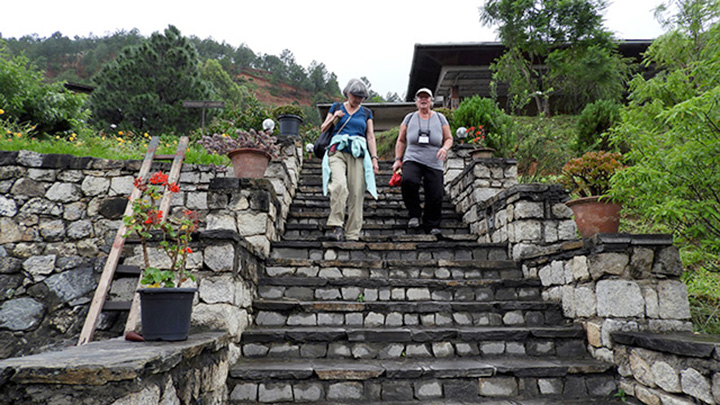
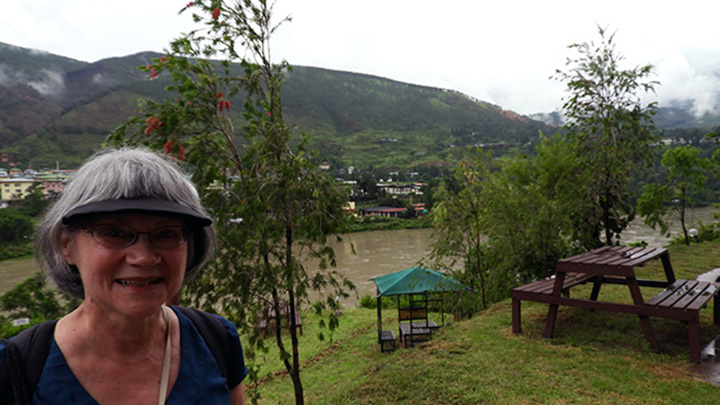

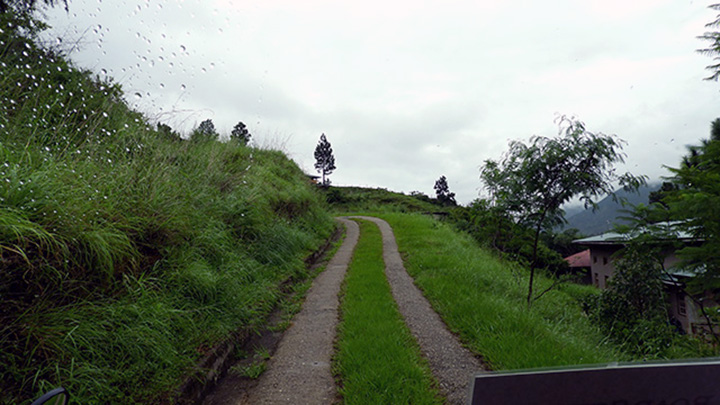
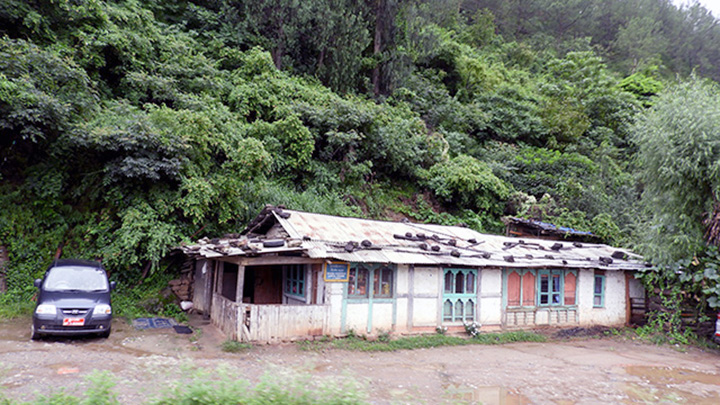
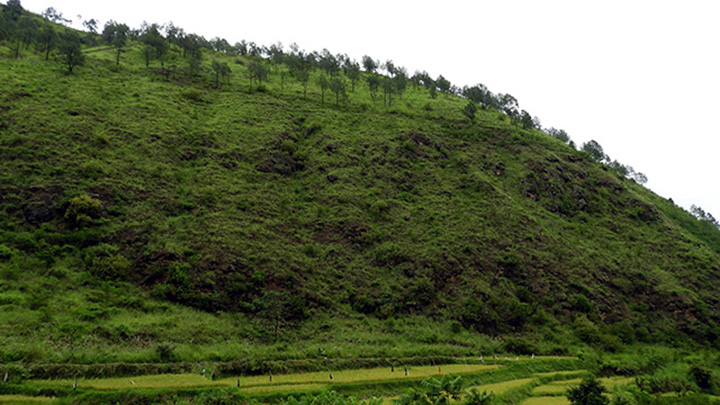
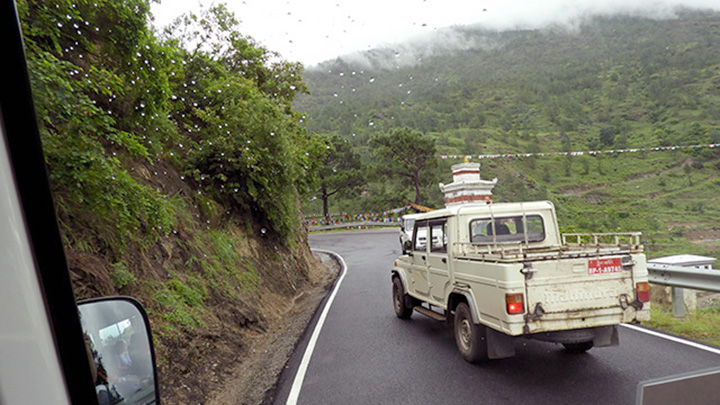
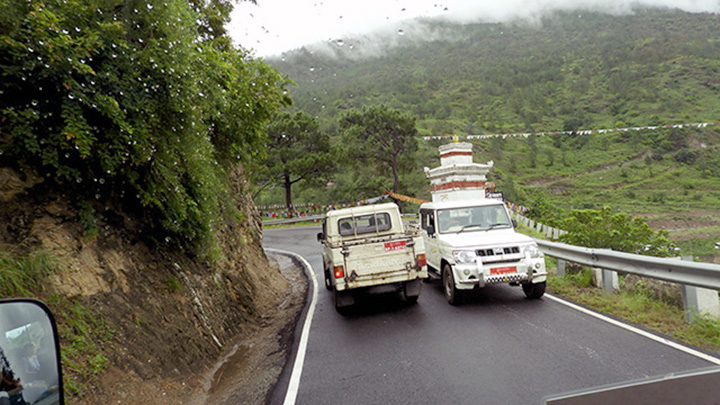
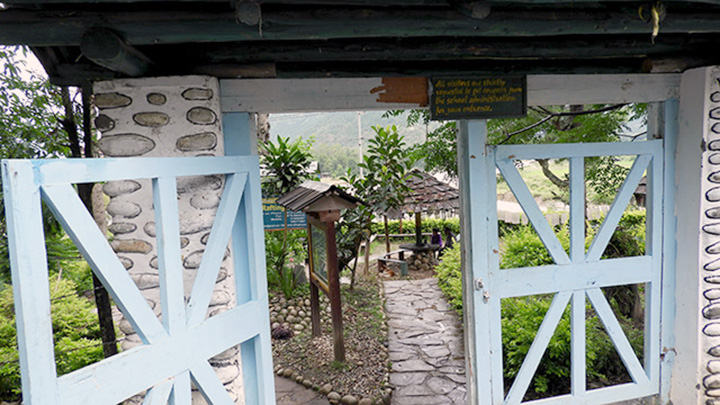
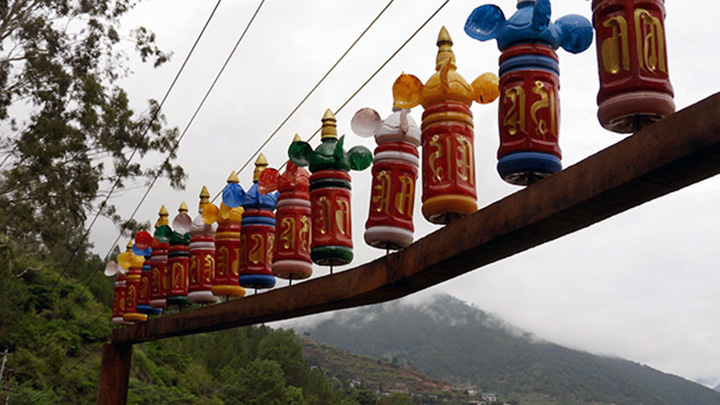

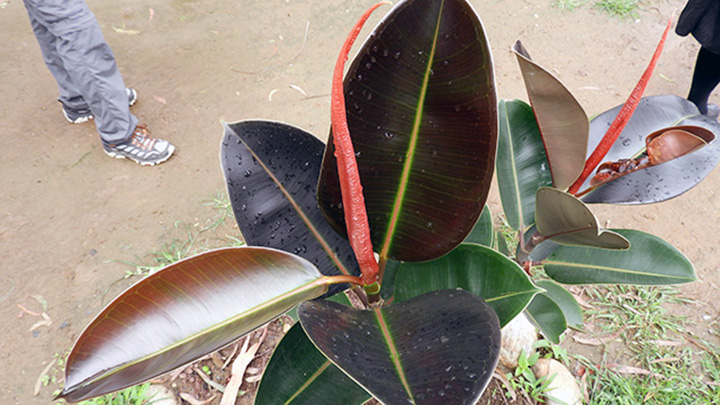
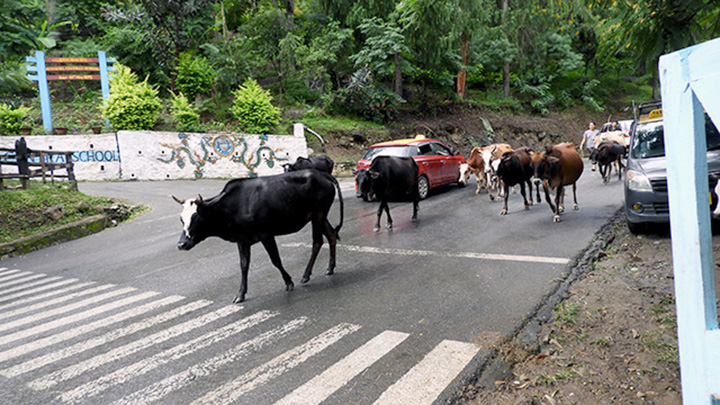
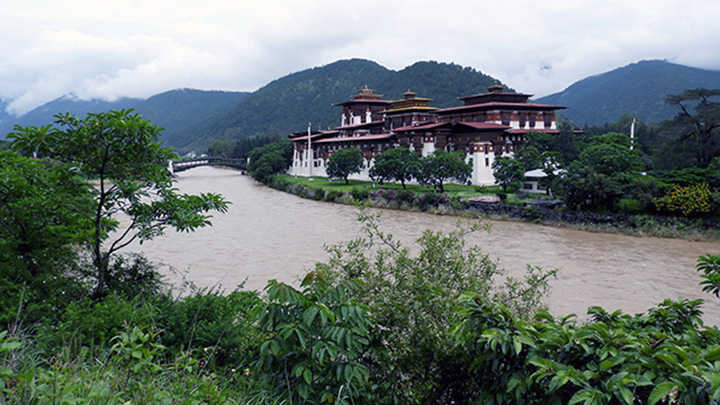
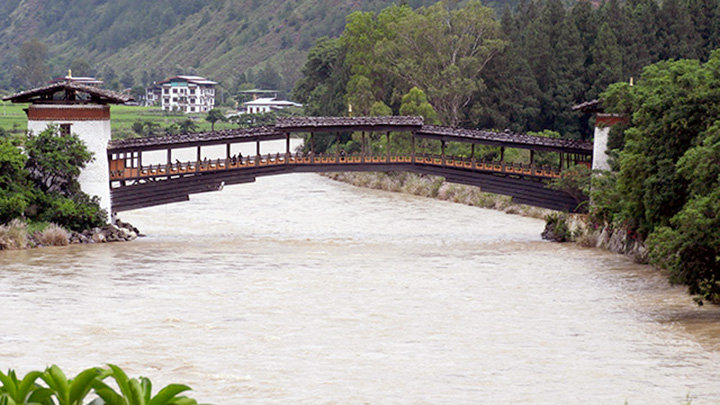
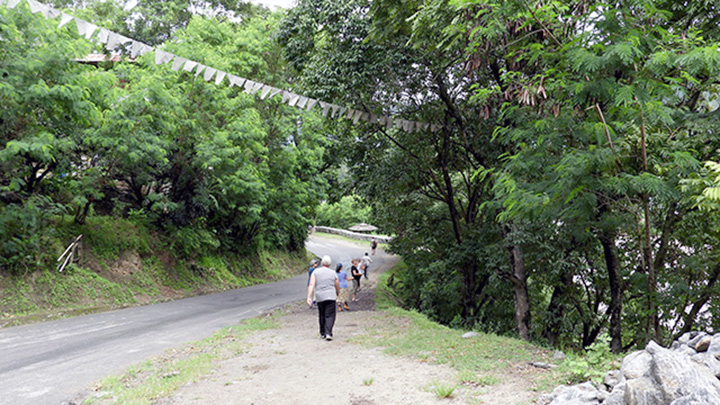
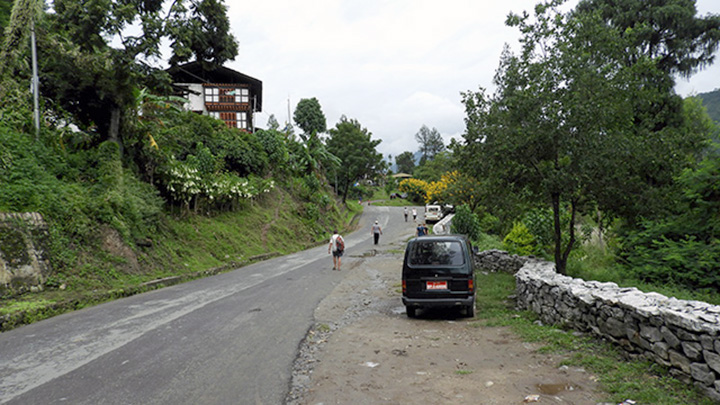
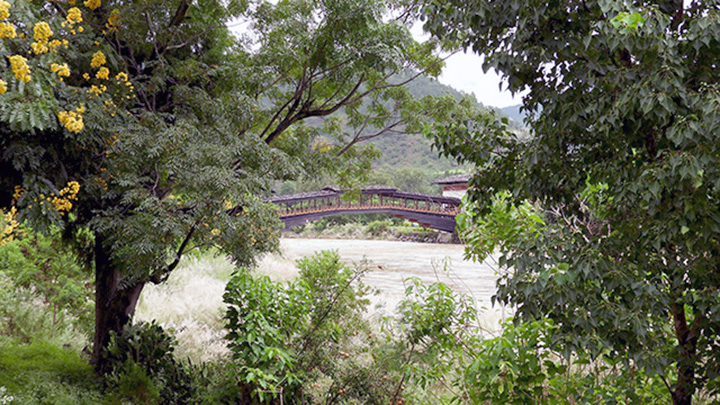
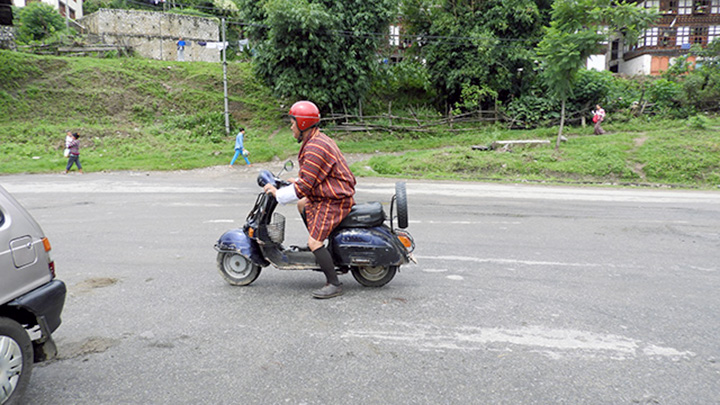

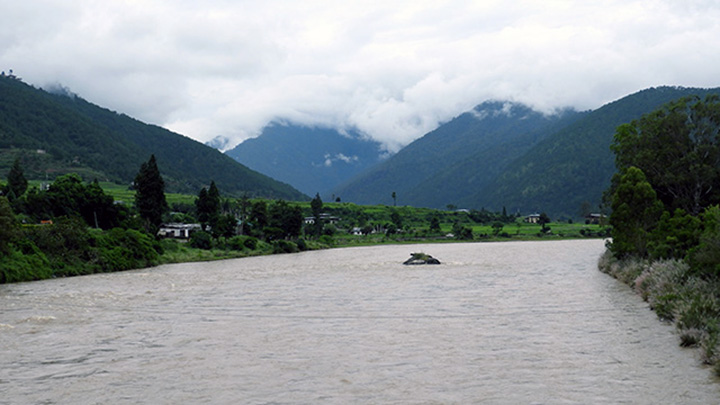
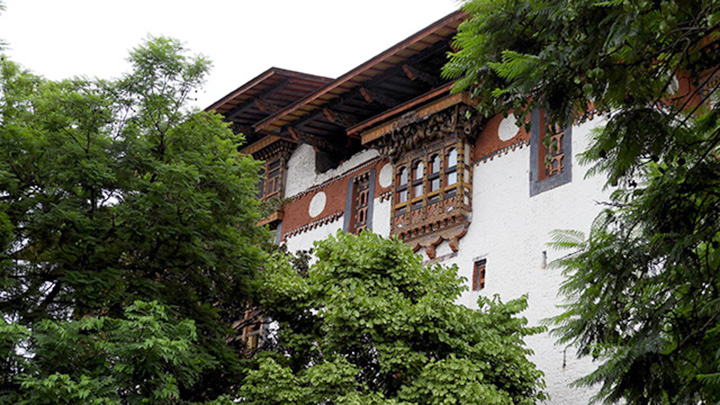


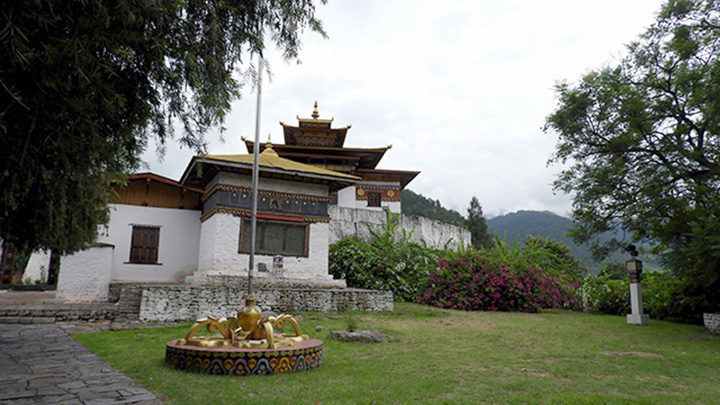

.JPG)
